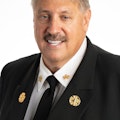I continue to be amazed at how educated some patients are. Some even seem to be more educated about health issues and reimbursement than our firefighter/paramedics. If there was a college course on how to deceive the healthcare system, many could be the instructors, since they all seem to have a Ph.D. in the practice of putting one over on the system.
Let me explain. First, they are educated on what to say when they call 9-1-1. This is especially true in communities in which some form of criteria-based dispatching protocols compel the dispatcher to ask a series of questions from a computer or from cards. In such places, the dispatcher must ask the questions exactly the way they are written on the card or computer screen. They cannot deviate. Depending on how the caller answers each question, the next question can follow a variety of paths. For example, if the first question asks whether the patient is alert or not alert, the caller may answer that the caller is alert. The second question may be whether the patient has any shortness of breath. If the caller answers yes, then the third question may be about chest pain.
Large-scale response
Based on the dispatchers working their way through the protocols, they will come up with determinants of how to code calls. In many EMS systems, how a call is coded will determine the response. If a caller answers yes to questions about shortness of breath, chest pain, sweating and pain radiating down the arm, they may very well get a first-responder company and an ambulance urgently.
There is where my heartburn comes in. Some patients call 9-1-1 often enough that they know to say yes to almost every question because they know they are going to get a fast and large response. These people are abusing the 9-1-1 system and quite frankly are jeopardizing the lives of firefighters and civilians if there were an accident while fire apparatus are enroute to one of these bogus calls. One patient was so adept at answering the questions that the dispatcher could not even get all the questions out before the caller would report experiencing chest pain and shortness of breath and having a history of heart disease. These are the educated patients. They know how to work the system.
The other type of educated patients are those who need their medical care delivered at home and know they will not get a bill because Medicare, Medicaid and private insurance will pay only if the person is transported to a hospital. These types of patients are usually asthmatics, diabetics or others with chronic illness who may need bandages changed or some other care not compliant with their medications or treatment. These patients use 9-1-1 to get their albuterol breathing treatments at home when they suffer asthma attacks. They call 9-1-1 and they know what to say so an engine and an ambulance will show up at the door and the crew will administer the breathing treatment.
The same can be said for some patients who are diabetics or need another type of care that can be delivered from an engine or ambulance. They call to get free home healthcare delivered to their door. It is better than some pizza companies since the engine or ambulance usually gets there in less than 30 minutes.
Putting others in jeopardy
The problem is that these patients consume vital resources that may be needed somewhere else. They jeopardize the lives of firefighters who must race to the scene and they expose civilians who may get into an accident with the emergency apparatus. The educated patient can be a drain on a 9-1-1 system.
What can be done about it?
Albert Einstein is frequently quoted as saying that doing the same thing over and over and expecting different results is the definition of insanity. Responding over and over to the same patients at the same addresses and thinking they will stop calling one day is insanity. They will call again. Usually, the only way they stop calling is when they die, move or are placed in a nursing home for the rest of their lives.
Somebody in your fire department has to address the issue. Somebody with the ability to make a decision in your fire department must step into the situation and find a resolution. It may require a visit to the person’s home. It may require sending a bill, even though there was no transport, and turning it over to a collection company if it is not paid.
What I have seen get the best results is to involve social agencies in these patients’ cases with the goal of plugging them into other resources that may be better to help them with their needs. Sometimes, faith-based organizations are available to help these patients.
The educated patient can be troublesome.
For more news and training on EMS, visit http://EMSWorld.com/.
GARY LUDWIG, a Firehouse® contributing editor, has 35 years of fire, rescue and EMS experience. He currently serves as a deputy fire chief for the Memphis, TN, Fire Department. Ludwig is also chair of the EMS Section for the International Association of Fire Chiefs. He can be reached through his website at garyludwig.com.
About the Author
Gary Ludwig
GARY LUDWIG has served in three fire departments over his career: St. Louis, Memphis, and Champaign, IL. His fire, EMS and rescue career spanned a total of 46 years, and he has been a paramedic for over 44 years. Ludwig served as president of the International Association of Fire Chiefs in 2019-20. He has a Master’s degree in Business and Management, has written over 500 articles for professional fire and EMS publications and is the author of seven books.
Connect with Gary
Email: [email protected]
Facebook: Gary Ludwig
Twitter: @ChiefGaryLudwig
Website: garyludwig.com
